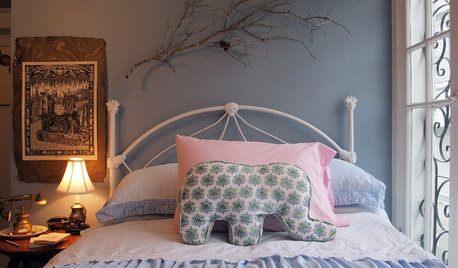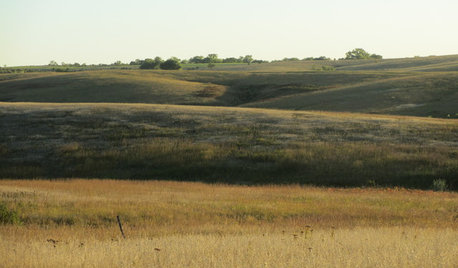I'm not sure if I can direct people to my myspace page in here or not, so I just copied and pasted some info I typed in my blog:
One year ago, in Spring 2006 semester, I initiated an idea into my college's ecology class the idea of Northwest State Community College planting Ohio's native prairie and meadow species into their landscape design as a part of ecomanagement. I was then the editor of a "introductory" proposal to gain support within the college.
In Fall semester of 2006 the S4S (Students for Sustainability) group began. I am the Vice president. I called many native prairie landscape designers and was pleased to find John Blakeman from Meadow Environments, LLC. John asked me some tough questions. I must have answered them well, because he then told me that he was willing to do the designs pro bono. I was so happy.
Next, a detailed proposal had to be written. This was my first ever, and I received great help from an old professor of mine, Dr. Singer.
Then, I had to do a presentation to the college's administration council meeting. I was told the group would be small, so imagine my shock when 30+ people came in (to me, that isn't a small groups, whereas to others it would be small). Nervous, I gave my part of the presentation, then let Angie (another student) give her part of the presentation. Her section dealt with beginning an organic veggie garden, which will look really lovely.
The project, entitled "Native Solace" received support, with a few details to be hammered out, such as making sure the native plant plots would be within the colleges boundaries. I was ecstatic!
Then, I had to give yet another presentation to the college's faculty council meeting. Support was received there as well.
Then I gave a presentation to the faculty council meeting. This was the hardest area to win over (I thought the administrators would be!). I wasnt aware of it, but the college was going through funding cuts, so some of the staff was unhappy less than 2,000 was being spent this year for a praire..... But the majority approved it!!!! Support was found!
I graduate on May 12. I cannot wait. Even so, my work at the college will not be done. Right after graduation, I will be out there in the dirt, weeding like mad and laying out hundreds of baby switch grass and little blue stem.
Then in winter, we are laying seeds back by the pond.
See, each year, a new proposal must be submitted to add on to the previous years work. That is, we will keep adding more native plants yearly. So, I got the college to do my dream for me--to educate the community about native plants over non-native ones!
Now, my father is planting a prairie RIGHT BEHIND the forest I will be buying! YES! And he is getting paid to do this from our states Quail program!!!!
Native plants only need tended to really in their first year while they establish themselves. After that, they are hardy and almost care-free, since they have evolved with the climate they are native too.
And contrary to popular belief, they do not look like weeds. They are visibly stunning! So many people erroneously believe that the best plants come from a local nursery, laden with chemicals. Ornamental plants and exotics are seen as the way to go, because they are different. Well, native is the new different!
Non-native plants require more water to keep them going in many gardens, where as natives are drought hardy, saving our fresh water!
Native prairies and meadows can also help reduce global warming! How?
Lawn mowers do not have catalytic converters like cars do, and therefore things like gas powered lawn mowers and weed whippers put of tons of pollution. The EPA estimates that using a lawn mower for one hour is just like driving a car for two days! Therefore, when one uses native plant species, they don't require mowing, except for maybe once a year if a person does not want to bring in a fire manager (certified) to do a controlled burn. This will drastically cut down on the cost of gas, and the amount of carbon dioxide/greenhouse gasses released into the atmosphere.
And as for grass, it is not environmentally beneficial whatsoever. It offers not benefits to wildlife at all. It is wasted space. It is out dated. We are no longer living in the 50's!
Furthermore, native plant species have evolved with our native wildlife, such as song birds and butterflies, both of which are running out of habitat to sustain them. We cannot rely on just the governments public land to support wildlife. They simply do not own enough. Native plants can be selected to offer wildlife food throughout all seasons for birds. Another example is that plants can be selected to support the butterfly in all its stages of life, from egg, to caterpillar, to adult. This is important. If a butterfly lays its egg on a host plant, that will turn into a caterpillar. But if the caterpillars host plant is miles and miles away, that caterpillar will never be able to find it!
And this is also why it is very important to go organic. If one attracts many butterflies or even birds to his or her yard, and then uses synthetic man-made chemicals to kill unwanted pests, weeds, fungus, molds, etc., then one is not helping but is harming as the butterflies will die and the birds can too. Killing pest bugs also kills beneficial bugs. Going on, toads and frogs have permeable skins, meaning that their skin readily absorbs moisture. So these chemicals kill them as well. In fact, amphibian are "indicator" species for this very reason. When toads and frogs begin dieing in their habitats it tells us that something is wrong with the environment. Sadly, many species are severely endangered and some are now extinct.
The time to change is now. When hearing of all the dire consequences happening to our environment, don'ts just say "Someone should do something," Be the someone who DOES something!
------------------------------------------------------------
Sammie
















jcsgreenthumb
gimpytwice
Related Professionals
Forest Acres Landscape Architects & Landscape Designers · Kapaa Landscape Architects & Landscape Designers · Piqua Landscape Architects & Landscape Designers · Mooresville Landscape Contractors · Apollo Beach Landscape Contractors · Harrisburg Landscape Contractors · Hilo Landscape Contractors · Longmont Landscape Contractors · Middletown Landscape Contractors · Milton Landscape Contractors · Mount Kisco Landscape Contractors · View Park-Windsor Hills Landscape Contractors · Palos Heights Landscape Contractors · Champaign Decks, Patios & Outdoor Enclosures · Southampton Decks, Patios & Outdoor Enclosures